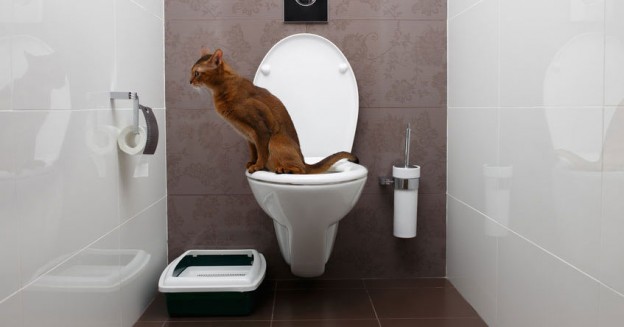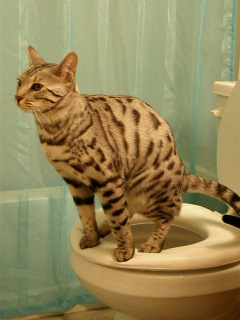Prevent Clogs and Damage: Never Flush Cat Poop Down Your Toilet - Professional Recommendations
Prevent Clogs and Damage: Never Flush Cat Poop Down Your Toilet - Professional Recommendations
Blog Article
We have stumbled upon this post about Can You Flush Cat Poo or Litter Down the Toilet? listed below on the net and concluded it made sense to share it with you on this site.

Introduction
As pet cat proprietors, it's vital to bear in mind just how we throw away our feline pals' waste. While it might seem hassle-free to flush feline poop down the commode, this practice can have harmful effects for both the setting and human health and wellness.
Alternatives to Flushing
Thankfully, there are much safer and a lot more liable ways to get rid of feline poop. Consider the following alternatives:
1. Scoop and Dispose in Trash
The most usual technique of getting rid of cat poop is to scoop it into an eco-friendly bag and toss it in the trash. Be sure to make use of a committed trash inside story and get rid of the waste promptly.
2. Usage Biodegradable Litter
Go with naturally degradable pet cat trash made from products such as corn or wheat. These litters are eco-friendly and can be safely taken care of in the garbage.
3. Bury in the Yard
If you have a lawn, think about burying cat waste in a designated area far from vegetable gardens and water sources. Make certain to dig deep enough to avoid contamination of groundwater.
4. Install a Pet Waste Disposal System
Invest in a family pet waste disposal system particularly made for feline waste. These systems make use of enzymes to break down the waste, decreasing smell and environmental effect.
Health and wellness Risks
Along with environmental problems, purging feline waste can also position health and wellness threats to human beings. Cat feces might have Toxoplasma gondii, a bloodsucker that can cause toxoplasmosis-- a potentially extreme ailment, particularly for pregnant women and individuals with damaged body immune systems.
Ecological Impact
Purging pet cat poop presents hazardous pathogens and bloodsuckers into the water system, positioning a significant danger to marine communities. These impurities can negatively affect marine life and concession water high quality.
Final thought
Responsible pet ownership extends past providing food and sanctuary-- it additionally includes correct waste monitoring. By refraining from flushing feline poop down the bathroom and choosing different disposal methods, we can decrease our environmental footprint and safeguard human health and wellness.
Why Can’t I Flush Cat Poop?
It Spreads a Parasite
Cats are frequently infected with a parasite called toxoplasma gondii. The parasite causes an infection called toxoplasmosis. It is usually harmless to cats. The parasite only uses cat poop as a host for its eggs. Otherwise, the cat’s immune system usually keeps the infection at low enough levels to maintain its own health. But it does not stop the develop of eggs. These eggs are tiny and surprisingly tough. They may survive for a year before they begin to grow. But that’s the problem.
Our wastewater system is not designed to deal with toxoplasmosis eggs. Instead, most eggs will flush from your toilet into sewers and wastewater management plants. After the sewage is treated for many other harmful things in it, it is typically released into local rivers, lakes, or oceans. Here, the toxoplasmosis eggs can find new hosts, including starfish, crabs, otters, and many other wildlife. For many, this is a significant risk to their health. Toxoplasmosis can also end up infecting water sources that are important for agriculture, which means our deer, pigs, and sheep can get infected too.
Is There Risk to Humans?
There can be a risk to human life from flushing cat poop down the toilet. If you do so, the parasites from your cat’s poop can end up in shellfish, game animals, or livestock. If this meat is then served raw or undercooked, the people who eat it can get sick.
In fact, according to the CDC, 40 million people in the United States are infected with toxoplasma gondii. They get it from exposure to infected seafood, or from some kind of cat poop contamination, like drinking from a stream that is contaminated or touching anything that has come into contact with cat poop. That includes just cleaning a cat litter box.
Most people who get infected with these parasites will not develop any symptoms. However, for pregnant women or for those with compromised immune systems, the parasite can cause severe health problems.
How to Handle Cat Poop
The best way to handle cat poop is actually to clean the box more often. The eggs that the parasite sheds will not become active until one to five days after the cat poops. That means that if you clean daily, you’re much less likely to come into direct contact with infectious eggs.
That said, always dispose of cat poop in the garbage and not down the toilet. Wash your hands before and after you clean the litter box, and bring the bag of poop right outside to your garbage bins.
https://trenchlesssolutionsusa.com/why-cant-i-flush-cat-poop/

I was introduced to that report about How to Dispose of Cat Poop and Litter Without Plastic Bags from an associate on our other domain. Enjoyed reading our posting? Please share it. Help others discover it. Thank you so much for going through it.
Request Service Report this page